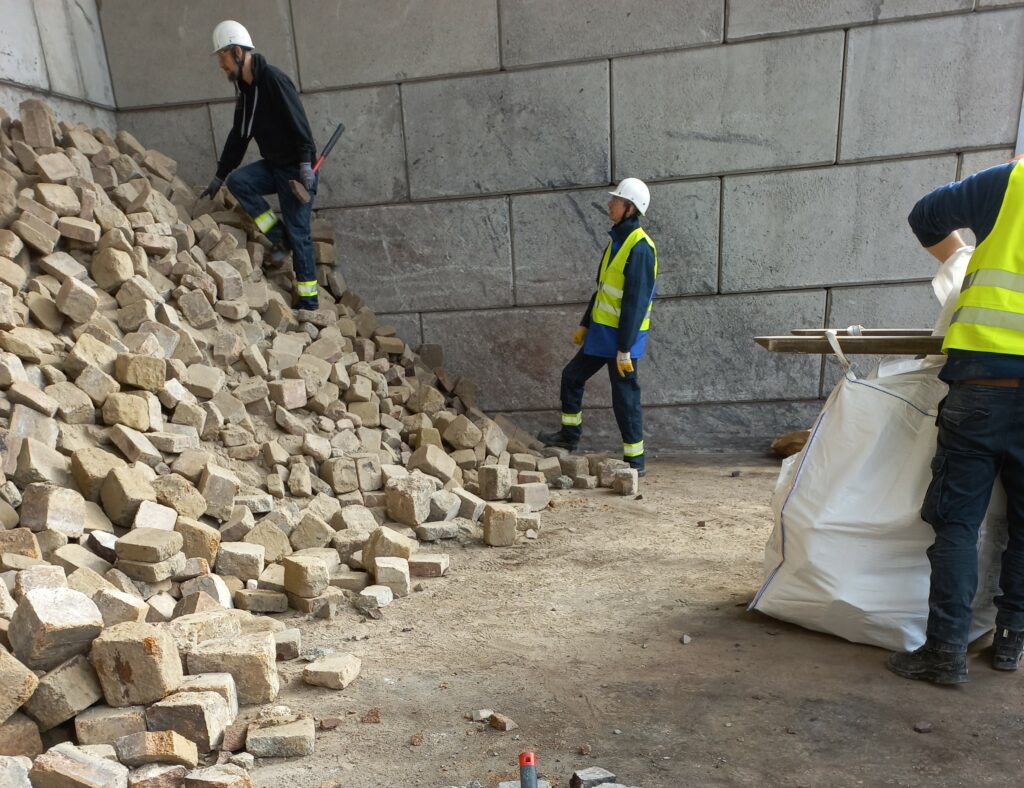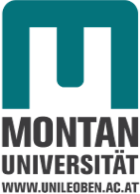The Third of Its Name – Representative Sampling #3

As the year goes by and the season changes, it is about time for cement producers to break out their old, worn-out kilns and renew their refractories to prepare themselves for a new and more productive season. Since breakout material from cement rotary kilns (CRK) is considered as valuable recycling material, recyclers all over the world swarm out to get their share. Luckily our team members at RHI Magnesita are always on the lookout and again chose suitable feedstock material for our project. As the 15th day of February dawned, the third representative sampling campaign began. The weather was not in our favour at the beginning, but it finally cleared up, and the sun showed itself benevolent to our project.
In contrast to the last CRK refractories, the encountered material was the same size, but many of the stones were still cemented together and much more fines (grain size < 5 mm) could be found. The sampling procedure was exactly the same as last time. The reason for this decision was the greatest possible comparability with the other CRK material. Since sampling significantly impacts analytical results, comparability can be ensured if the sampling procedure remains the same.
So again, 8 wheel-loader buckets of 4 tonnes each were dumped on a separate area (this time, it was the next roofed outdoor storage compartment) and subdivided into 4 subsets. The last two sample piles were located in the remaining pile. A total of 40 samples á 25-30 kg were taken, summing up to approximately 1.2 t of sample material.
The increased amount of fines also benefited our sampling because after tipping the sample material, all the stones were covered with fines and could no longer be distinguished from each other, which is very conducive to random sampling.
The next step will again involve hand sorting of chosen sample bags and analytical investigations like X-ray fluorescence spectrometer to identify the chemical composition or X-ray diffraction analysis to display the mineral content and, of course, the comparison with the results of the firstly sampled cement rotary kiln.

Author’s Portrait
Florian Feucht
Florian Feucht, BSc is a member of the student staff at the Montanuniversitaet Leoben, Chair of Waste Management and Waste Treatment, Workgroup: “Material-Oriented Waste Technology”. He wrote his master thesis about “Chemical-Mineralogical Characterization of Ladle Slag from Voestalpine Linz” and will continue in the Montanuniversity’s PhD program.
2014 to 2018 he studied at the University of Vienna Earth Sciences and wrote a bachelor thesis on the subject: “Petrological and Petrographical Ínvestigation of Mafic-, Ultramafic Rocks from the Dunkelsteinerwald, Gföhler Unit, Moldanubic”
His research interests are chemical-mineralogical characterisation of mineral wastes, Mineralogy, Slag mineralogy, Recycling and Waste Management.
Partner

